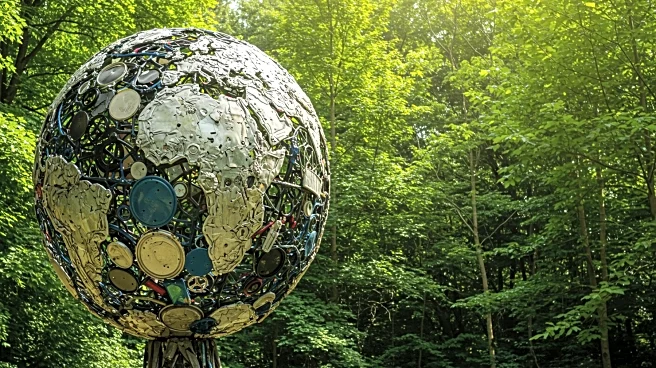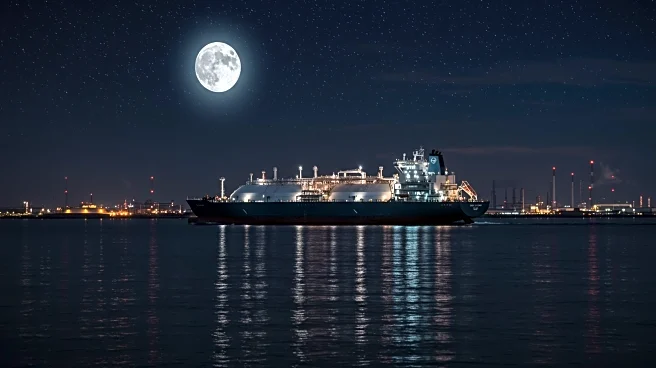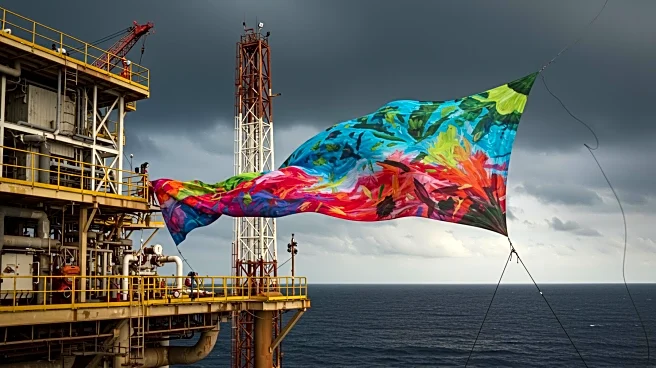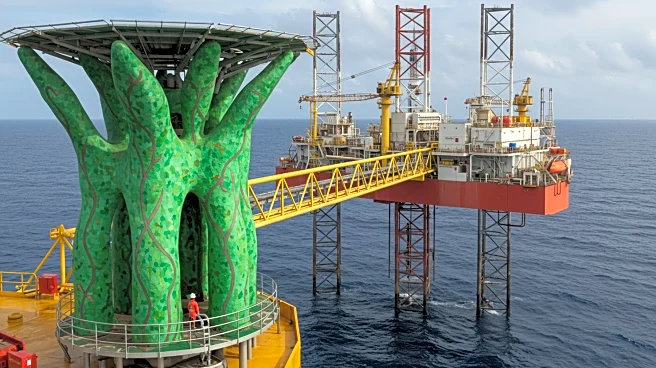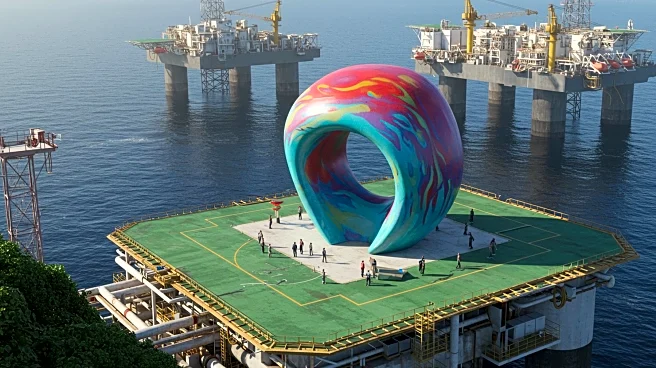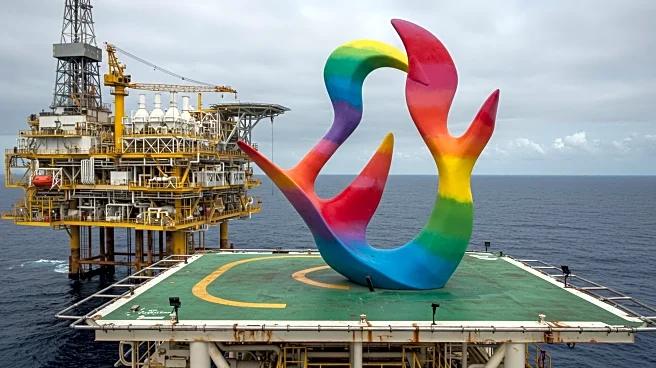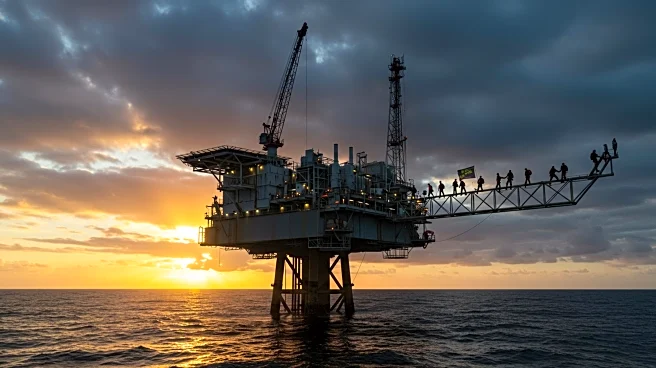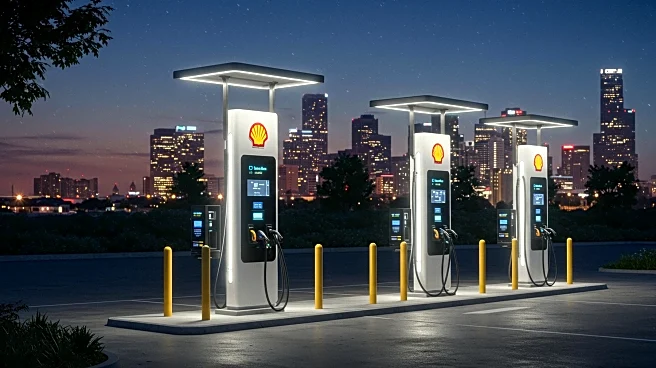What is the story about?
What's Happening?
Greenpeace activists have collaborated with artist Anish Kapoor to create a protest art installation on a North Sea gas rig operated by Shell. The artwork, titled 'Butchered,' features a large canvas sprayed with crimson paint, symbolizing environmental destruction. The installation aims to draw attention to the impact of fossil fuel extraction on climate change. Greenpeace's action coincides with Shell's recent reduction in its renewable energy investment targets. The protest highlights the urgency of addressing climate change and the role of major corporations in environmental degradation.
Why It's Important?
This protest art installation serves as a powerful visual statement against the environmental impact of fossil fuel extraction. It underscores the ongoing debate about corporate responsibility in addressing climate change. By targeting a Shell-operated rig, Greenpeace aims to hold the company accountable for its role in global warming. The collaboration with Anish Kapoor adds artistic credibility to the protest, potentially increasing public awareness and engagement. Such actions can influence public opinion and pressure corporations to adopt more sustainable practices, contributing to broader environmental policy changes.
What's Next?
The protest may prompt further discussions on corporate environmental responsibility and the effectiveness of artistic activism. Shell's response to the protest highlights the tension between environmental groups and fossil fuel companies. Future actions by Greenpeace and other organizations could escalate, leading to increased scrutiny of corporate practices. The collaboration with artists like Kapoor may inspire similar initiatives, using art as a tool for environmental advocacy. The ongoing climate crisis may drive more public and governmental pressure on companies to prioritize sustainability.
AI Generated Content
Do you find this article useful?
